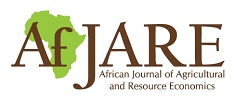Assessing the adoption rates of improved technology in traditional poultry farming: Evidence from rural Togo
Mawussi Kossivi Soviadan, Zaneta Kubik, Anselm Anibueze Enete, & Chukwuemeka Uzoma Okoye
Abstract
The adoption of improved agricultural technologies is known to significantly improve incomes, create more wealth, alleviate poverty and contribute to rural development in many developing countries. The Government of Togo, through the National Programme for Agricultural Investment and Food Security (PNIASAN) and the Agricultural Sector Support Project (PASA), and with financial support from the World Bank and help from the Food and Agriculture Organization of the United Nations (FAO), provides assistance to smallholder farmers in improved technology adoption in traditional poultry farming (ITTPF) for wealth creation, food security and poverty alleviation. However, for any technology or emerging agricultural practices, awareness and exposure are necessary conditions for their adoption. And because these two factors are not distributed randomly in the population of potential adopters, not taking them into account will lead to estimates of population adoption rates that are not informative of the true demand for the technology, and to inconsistent estimates of the parameters of the adoption model. In this study, we evaluate the adoption rates of ITTPF among farmers in Togo. Data was collected from 400 farmers in 2014, prior to the introduction of ITTPF, and again five years later. This data was then analysed using inverse propensity score weighting and parametric estimation of adoption regression models. The results of the estimates indicate that the average treatment effect (……), which represents the mean potential adoption rate of the population, is 57%, the average treatment effect on the treated (……..), which represents the mean potential adoption rate in the exposed subpopulation, is 60%, the population mean joint exposure and adoption rate (JEA) is 13%, and the population selection bias (PSB) is 3%. The sample adoption rate (JEA)
